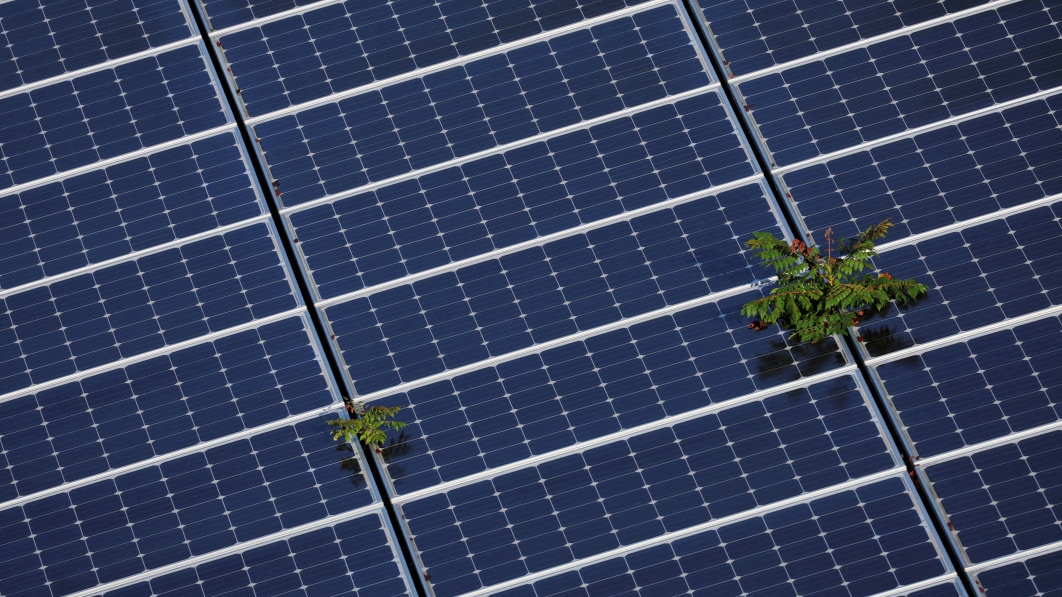Developers accumulated massive stockpiles during tariff moratorium
A two-year U.S. tariff holiday on solar panels from Southeast Asia expired on Thursday, starting the clock ticking for American project developers to use the huge amount of equipment they stockpiled duty-free over that period by the end of this year.
The dynamic could result in a mini-boom in already red-hot U.S. solar installations, while also annoying the nascent domestic manufacturing industry which is keen to see developers make the switch to American-made gear.
U.S. solar developers accumulated around 35 gigawatts (GW) of imported panels in U.S. warehouses since President Joe Biden lifted the duties on Malaysia, Thailand, Cambodia and Vietnam in 2022 to help speed domestic projects to fight climate change, according to energy advisory firm Clean Energy Associates.
That is nearly as much solar capacity as the U.S. will install during all of 2024, according to research firm Wood Mackenzie.
The vast majority of the inventory is believed to have come from the targeted countries, and once the tariffs snap back into place on June 6, companies will have just 180 days to use that Southeast Asian stock or they will need to pay up.
Companies have already dramatically increased project building, with utility-scale installations soaring 135% to 9.8 GW in the first quarter, according to Wood Mackenzie.
“The temporary tariff moratorium did its job to ensure a sufficient supply of solar modules to support the need for increased clean energy deployment,” said Stacy Ettinger, senior vice president of supply chain and trade for the Solar Energy Industries Association, a trade group.
An attorney for U.S. solar manufacturers who are seeking new tariffs on Southeast Asian imports said it was unrealistic to expect all the inventory to be used in the next six months.
“The tariff moratorium led to this surge and glut of inventories that we’re seeing today, that has also contributed to the 50% price collapse in the market that is harming the U.S. industry,” Tim Brightbill, a trade attorney with Wiley Rein, said, referring to domestic manufacturers of panels.
The glut of panels marks an about-face for the U.S. industry, which until a year ago was struggling with tight supplies due to the coronavirus pandemic and concerns about solar equipment linked to forced labor, among other constraints.
Solar imports surged since the beginning of 2023 and were up nearly 14% in the first quarter this year – with 88% of that from the targeted countries, according to S&P Global Market Intelligence. The tariffs are meant to target imports by companies found to be dodging U.S. duties on Chinese goods by finishing panels in the four Southeast Asian nations.
The White House said last month that it would vigorously enforce the 180-day deadline to prevent stockpiling.
SEIA did not address the deadline in its statement to Reuters.
SEIA had lobbied against the circumvention tariffs, saying they would drive up project costs and threaten the nation’s ability to address climate change.
It did not lobby for an extension of the tariff holiday.
U.S. solar installations hit record
Solar accounted for 75% of electricity generation capacity added to the U.S. power grid early this year as installations of panels rose to a quarterly record, according to a report published by Wood Mackenzie and the Solar Energy Industries Association on Thursday.
The country’s solar industry saw 11.8 gigawatts of new capacity in the first three months of 2024 as electric utilities continued their rapid additions of the renewable power sources, the report said.
U.S. solar has benefited from the increased availability of panels and from federal and state policies aimed at increasing the amount of clean energy on the electric grid to meet climate-driven emissions goals.
“Not only has the global solar supply chain expanded, but module imports to the U.S. have also risen significantly over the last year,” according to the report.
Supply chain bottlenecks eased and the cost of solar panels fell after Biden placed a two-year moratorium on imported panels believed to be produced with forced labor in China.
From June 2023 through March 2024, the U.S. imported 49 GW of solar modules. Domestic solar panel manufacturing capacity, meanwhile, jumped to 26.6 gigawatts for the first three months of the year from 15.6 gigawatts the prior quarter.
Florida, followed by Texas, California, and Nevada, installed the most panels, with utility-scale solar making up the majority of the additions.
Home solar additions fell 25% year-over-year and 18% quarter-over-quarter, largely on rising interest rates and a slowdown in California’s rooftop solar. The commercial solar sector was roughly flat quarter-over-quarter.
The United States is expected to install roughly the same amount of solar capacity this year as 2023, which was a record of nearly 40 Gigawatts of additions, the report said.
Source: www.autoblog.com Text-to-Speech (TTS) provided by gspeech


